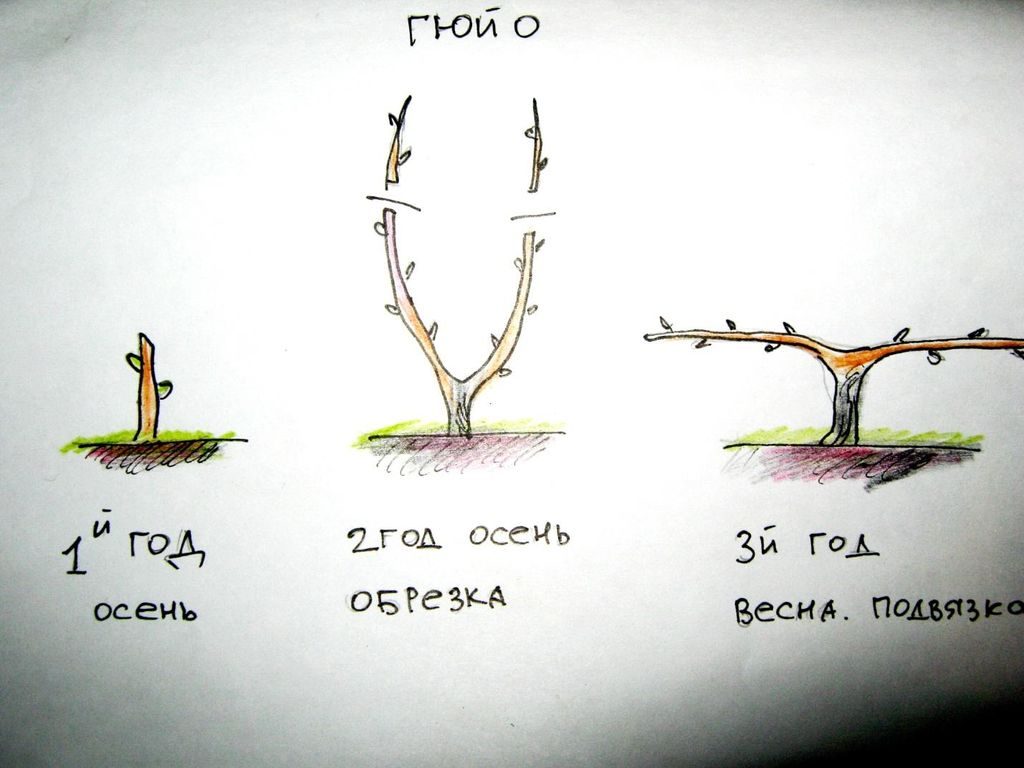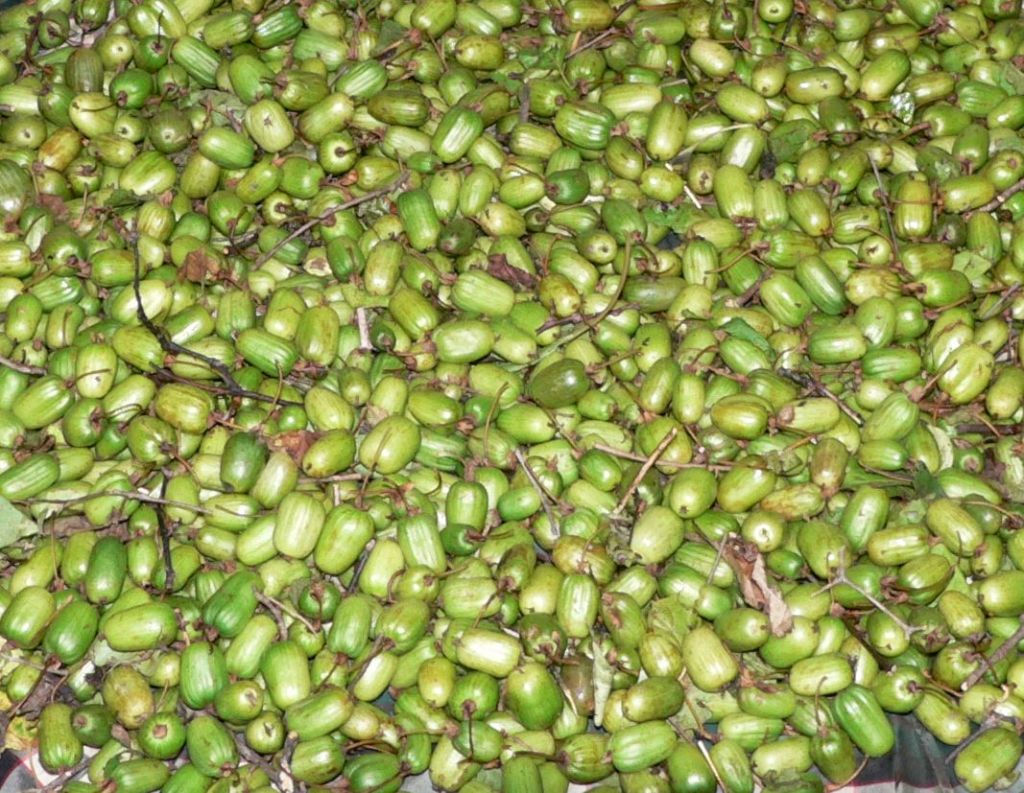Content:
Grapes are quite capricious and require care. The most responsible and creative work in the vineyard is pruning grapes to form a bush. The vine must be of the correct shape to suit local conditions and also suitable for winter shelter. How to properly prune grapes is described below.
Why do you need to cut grapes
Formation of grape vines, pruning, care is an obligatory component of care. Otherwise, the vineyard may overgrow so that the sun's rays will not break through to the bunches and this will certainly affect the quality of the crop.
There is a legend that the pruning of vineyards began no more than two centuries ago, and before that the vines grew without human intervention. The most amazing thing is that this practice was started by a donkey. The grower noticed that the bitten plants bear fruit better and develop more rapidly.
Much time has passed, and by trial and error the pruning rules have been greatly improved. The main task of pruning is to increase the average yield. Thanks to a competent approach in this matter, the care process is greatly simplified. By shortening or removing damaged, weak, non-fruiting shoots, the growth of new branches is stimulated. As a result, the plant is constantly rejuvenating and bears fruit abundantly.
At the same time, bushes are being formed. Thanks to this, the culture can also have a decorative purpose, decorating a summer cottage.
How to prune grapes
Agronomists differ on when and how to prune grapes. There are adherents of spring and autumn pruning. The following will be a detailed step-by-step description of the process. But first, it will not be superfluous to clarify - in the first year of life, a young seedling does not need pruning. For the first processing to be successful, you should familiarize yourself with all the intricacies of this process, namely:
- It is necessary to cut the vine only on one side.
- The tool used must be clean and sharp.
- The fruit arrow should be positioned over the replacement knot.
- The shoot must be cut in the direction from the peephole so that they are not flooded with "tears".
Pruning grapes in spring
Pruning must be done before flowering and fruit formation. It may be late in May. All diseased, non-fruiting, frozen and dry branches should be removed. Do not feel sorry for overly thick and, on the contrary, thin shoots. The length of the branches should be limited to 10-12 eyes, no more.
During spring pruning, no more than two nodes should be left on each shoot. The scheme will depend on the standard or standard formation of the bush and its age.
Pruning grapes in summer
Summer pruning usually occurs in June and is limited to a few simple manipulations. The first thing they start is pinning. The stepchildren are second-order shoots. They are formed during the entire growing season from summer buds in the axils of green leaves. If not removed, they will weaken the bush as they absorb a lot of nutrients.Experienced agronomists advise not to pinch young shoots, and then leave 1-2 lower leaves on each unit.
At the end of summer, it is time for the second procedure - coinage. Its main task is to direct nutrients in such a way that all fruits can ripen. It's time to start chasing bushes at a time when the shoots stop growing. Their tops are pinched off by about 15-20 cm.
In addition, with the onset of summer, you will need to thin out the bushes. After flowering, it is required to cut the leaves of the lower part of the vine, on which the clusters are formed.
How to prune grapes in the fall
Autumn pruning should be done 1-2 weeks after the bunch has been picked. This is necessary in order for the plant to gain strength. If a large amount of foliage remains on the plant, it is necessary to organize an artificial leaf fall. It is much easier to prune plants without foliage. General tips for pruning grapes before the upcoming frost:
- It is customary to cut the vine to wood; on the cut, it is characterized by a light green color.
- After pruning, at least 2 cm of living shoot should remain above the bud.
How to prune a bush after planting
After planting a young seedling, the main task of an agronomist is to grow healthy and strong shoots. The diameter of the branches should be at least 5 mm, so in the first year the plant cannot be touched, it is not advisable to cut it off.
At first, all the rules for planting and caring for the plant must be observed. It is very important to choose the right place, apply fertilizer and water the seedling abundantly. In the future, it is enough to regularly water it, apply fertilizers according to the attached instructions for use, loosen, mulch and irrigate with compounds against pests and diseases.
How to prune two year old grapes
If the bushes were not cut off before the onset of cold weather, then this should be done with the arrival of spring before the beginning of the growing season. The vine is cut in such a way that no more than two of the strongest shoots with 5 eyes on each of them remain on the plant.
About three eyes are left on a knot, and up to 10 eyes on a fruiting vine. When the plant begins to form clusters, the fertile vine is completely cut off, and shoots remain on the replacement knot, which should begin to bear fruit in the next year.
Pruning technique
There is more than one method for pruning grapes. Each of them has its own advantages and disadvantages, and they are used depending on the neglect of the bush and variety.
- Short. This method has an alternative name "on a knot". Its individual feature is short cutting of shoots. No more than 2-4 eyes are left on each vine. Short-cut bends are called replacement knots. This pruning is carried out for the purpose of rejuvenation. In addition, it allows you to give the bush the correct shape. In total, after pruning, approximately 40 eyes should remain on the bush.
- Average. At least eight eyes must be left on each bend. Thanks to this approach, it will be possible to preserve all frost-resistant bends. In total, at least 50 eyes are left on the bush.
- Long. This method is not suitable for all varieties, its main purpose is to increase the number of fruits. On each shoot, no more than 15 eyes must be left. A total of about 60 eyes should remain on the entire bush. A long pruning technique is used, usually for Asian grape varieties.
- Mixed. Perhaps the most common method among agronomists. A feature of this bush formation technique is the combination of long and short pruning. Thanks to this approach, it is possible to constantly update the bush. The other part of the shoots is shortened to increase the amount of fruiting.
Many novice agronomists are interested in whether it is worth cutting off a grape mustache. Unfortunately, there is no definite answer. Thanks to its mustache, the plant clings and develops better. If the grapes are tied up, then there is no point in keeping the mustache. On the other hand, it is the most reliable method of fastening grape branches. Therefore, the used mustache should not be touched, and the excess, freely hanging ones, can be removed.
Useful tips for beginners
It is necessary to take care of the grapes, since it is a capricious and wayward plant. If you neglect the basic agrotechnical rules, grapes will not only fail to bear fruit, but may also die.
- It is advisable to leave at least 4 eyes on the replacement knots, at least 15 on the fruit-bearing branches. This is important for the northern regions, where a drop in temperatures to critical levels threatens to kill a large number of branches.
- It is necessary that the slices are not directed outward, but toward the inside of the bush. This will speed up the regeneration processes, the wounds will heal faster.
- The cut should be done in one step. The shortened shoot should be as flat as possible. During agrotechnical manipulations, it is important not to damage the integrity of perennial sprouts.
- Grape arrows intended for fruiting should not have mechanical damage, as well as signs of internal diseases. The diameter of fruit-bearing shoots is at least 12 mm, they must be healthy and strong.
- As knots, bends are used that are as close to the stem as possible.
- In the first year after planting, the main task is to get two healthy and strong shoots. In each subsequent year, they can be increased.
- When pruning branches, leave small stumps. This is due to the fact that the damage does not heal on the bush, but dry up.
Pruning grapes has many subtleties, so it may seem daunting to an inexperienced grower. First, you need to study the existing recommendations and follow them. Grapes are a wayward culture that requires a lot of attention, but having mastered all the rules of caring for them, it will be possible to provide the family with incredibly tasty and healthy berries.
















